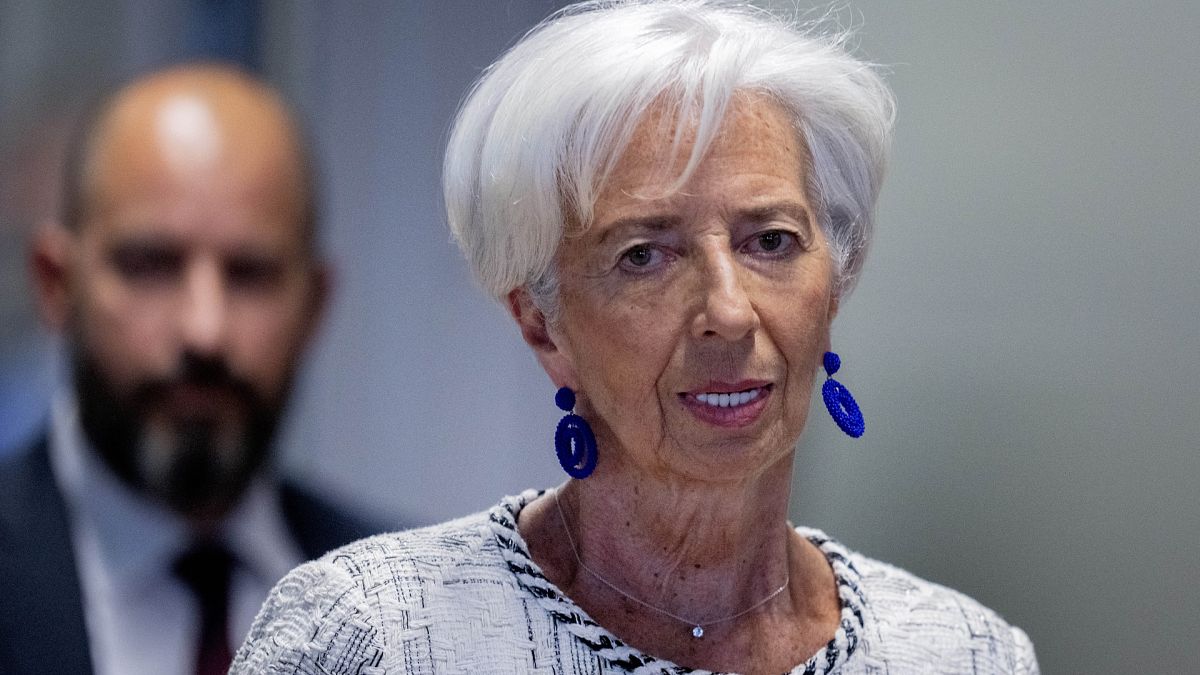Economists expect the ECB to continue rate cuts, aiming for 2% by mid-2025. Lagarde’s focus on downside inflation risks and weak growth signals further easing.
Economists and market analysts are in broad agreement that the European Central Bank (ECB) will continue cutting interest rates at each meeting for the foreseeable future, following Thursday’s decision to reduce rates by 25 basis points.
Here is what ECB watchers had to say about the rate-cut decision and future outlook.
Lagarde’s dovish tone signals room for more cuts
Ruben Segura-Cayuela, European economist at Bank of America, highlighted the dovish tone in Lagarde’s remarks, particularly her focus on downside risks to inflation.
“The fact that Lagarde told us that there are more downside than upside risks to inflation is more meaningful,” he said.
He added that this clearly “leaves the door wide open for back-to-back cuts,” noting that the disinflationary process is progressing well.
Segura-Cayuela expects rate cuts at every ECB meeting until the deposit facility rate reaches 2% by June 2025, followed by two quarterly cuts to bring it down to 1.5% by December 2025.
He sees December 2024 as a critical juncture, provided no significant shocks occur before then.
Downside risks to growth shape ECB policy
Carsten Brzeski, Global Head of Macro at ING, echoed similar sentiments about the ECB’s concern over the eurozone’s economic outlook.
“The ECB must have become much more concerned about the eurozone’s growth outlook and the risk of inflation undershooting the target,” Brzeski stated.
He believes the ECB will continue cutting rates as long as there is no substantial recovery in economic activity or inflationary pressures, signalling a prolonged period of monetary easing.
“It looks like they’re aiming to bring interest rates to neutral levels as quickly as possible,” said Brzeski.
Danske Bank analysts also raised questions about how long the ECB can maintain its restrictive policy stance.
Further rate cuts “highly likely”
In their view, the ECB is likely to cut rates only to 2% by the end of 2025, a level broadly considered neutral. However, they acknowledged the risk that the ECB could be forced to go below 2%, with markets currently pricing a 40% chance of this happening.
Goldman Sachs economists Sven Jari Stehn and Alexandre Stott anticipate another rate cut in December, viewing a 25 basis point reduction as “highly likely.”
They pointed to the recent weaker economic data as justification for continued cuts, maintaining that the ECB will likely lower rates by 25 basis points at each meeting until reaching 2% by mid-2025.
However, they warned of potential downside risks to their forecast, suggesting the ECB could go even further if the data continues to deteriorate.
BBVA analysts Alejandro Cuadrado and Roberto Cobo struck a slightly more cautious tone, pointing to the factors that could limit the ECB’s aggressiveness.
“We expect both headline and core inflation to accelerate due to base effects, commodity prices and exchange rate factors,” they stated.
This should prevent the ECB from pursuing too aggressive a rate-cutting path, barring any significant negative shocks to growth.
Euro faces pressure amid slower growth
The broader implications of the ECB’s rate cuts are also being felt in currency markets, with Luca Cigognini, a market strategist at Intesa Sanpaolo, noting that “the euro remains exposed to possible new declines” as the ECB continues to signal slower growth and increasing downside risks.
In conclusion, although the ECB remains non-committal about its future rate path, Lagarde’s emphasis on flexibility and data dependency has led economists to anticipate continued reductions in the coming months.

